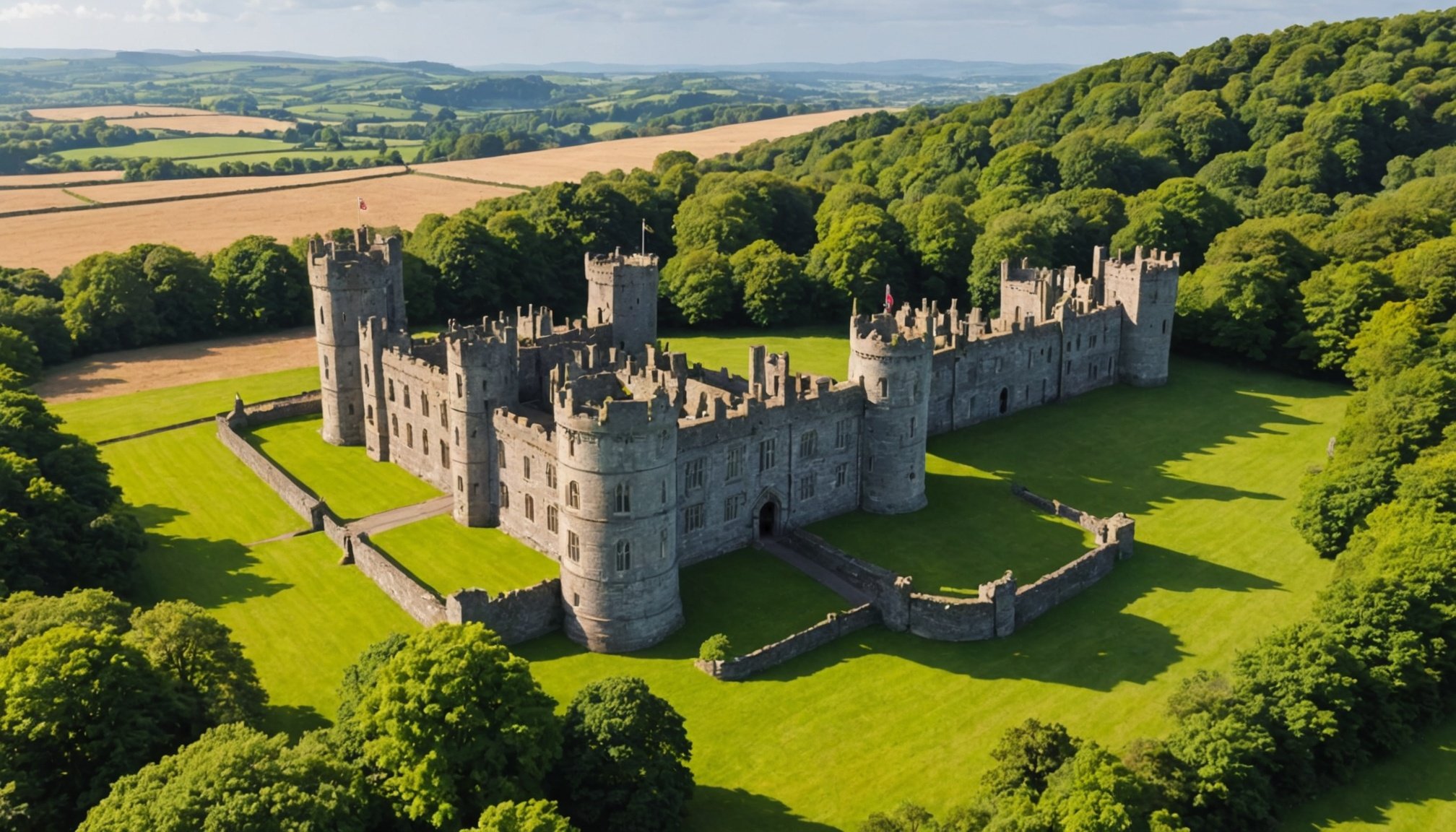Wales boasts a rich tapestry of history, woven into its landscapes and architecture. For avid history enthusiasts, this enchanting region offers an array of remarkable sites that tell stories of ancient civilizations and significant events. From majestic castles to prehistoric monuments, each destination invites exploration and reflection. Discover these top must-see historical gems that not only reveal Wales' past but also inspire future generations. Your journey through time begins here.
Overview of Historical Significance in Wales
Understanding the historical sites in Wales is crucial to appreciating the nation's rich tapestry of events that have shaped its identity. Wales boasts a remarkable array of sites that highlight the significance of Welsh history. From ancient castles to industrial relics, each location offers a glimpse into the past.
In the same genre : Top Safety Tips for Enjoying a Secure Hiking Adventure in Snowdonia
Preserving cultural heritage in Wales is vital. These sites not only connect us to historical events but also to the stories and traditions that define Welsh culture. Efforts to maintain these landmarks ensure that future generations can learn from and appreciate their history.
Wales has been shaped by numerous major historical events. The Roman invasion brought about significant changes, introducing new infrastructure and influencing local culture. The medieval period saw the construction of iconic castles, many of which still stand today. The Industrial Revolution further transformed Wales, leaving a legacy of industrial sites and innovations.
In the same genre : Discovering Whitby”s Top Seafood Gems: A Guide to the Best Local Catches
The historical landscapes of Wales are as diverse as its history. From the rugged beauty of Snowdonia to the rolling hills of the Brecon Beacons, these landscapes have witnessed centuries of change. Each region tells its own story, contributing to the rich mosaic of Welsh history and heritage.
Top Historical Sites to Visit
Exploring Wales offers a journey through its must-see historical sites, each contributing uniquely to its rich past. For history enthusiasts, these top attractions in Wales are indispensable.
Caernarfon Castle
Caernarfon Castle, a UNESCO World Heritage Site, is a prime example of medieval military architecture. Its imposing walls and strategic position reflect its significance in Welsh history, serving as a symbol of English dominance.
St Fagans National Museum of History
This open-air museum is one of the most popular historical landmarks in Wales. It showcases traditional Welsh life through reconstructed buildings, offering visitors an immersive experience of the country's cultural heritage.
Blaenavon Industrial Landscape
An emblem of the Industrial Revolution, Blaenavon is a testament to Wales's industrial might. The site includes the Big Pit National Coal Museum, where visitors can explore the depths of a former coal mine.
Harlech Castle
Perched on a rocky outcrop, Harlech Castle is renowned for its dramatic location and robust fortifications. It played a crucial role during the Wars of the Roses, illustrating the turbulent history of the region.
These historical landmarks not only offer insight into Wales's past but also highlight the resilience and ingenuity of its people.
Castles of Wales
The Welsh castles stand as monumental reminders of the country's medieval past. These structures, with their intricate designs, are prime examples of medieval architecture in Wales. Each castle tells a unique story, reflecting the historical events that shaped the region.
Conwy Castle
Conwy Castle is a masterpiece of military architecture, constructed under the reign of Edward I. Its robust walls and strategic location were pivotal during the Welsh Wars. Visitors can explore its eight towers, offering panoramic views of the surrounding landscape.
Caernarfon Castle
Renowned for its polygonal towers, Caernarfon Castle is a symbol of English might. It was built to cement English rule in Wales and played a significant role in the investiture of the Prince of Wales. The castle is accessible to visitors, with guided tours available to delve into its rich history.
Harlech Castle
Perched on a cliff, Harlech Castle boasts formidable fortifications. It was a stronghold during the Wars of the Roses, showcasing the turbulent castle history. The castle is open year-round, with facilities for those with mobility needs.
These castles not only offer a glimpse into the past but also highlight the architectural prowess of medieval builders.
Ancient Ruins and Archaeological Sites
Wales is a treasure trove of ancient sites that offer a fascinating glimpse into its prehistoric history. The archaeological discoveries made here provide invaluable insights into the lives of early inhabitants.
Notable Ancient Ruins
Among the most significant ruins are the Neolithic tombs, such as Bryn Celli Ddu on Anglesey. This passage tomb, dating back to around 3000 BC, showcases the advanced construction skills of its builders. The site is renowned for its alignment with the summer solstice, offering a mystical experience for visitors.
Another remarkable site is the Castell Henllys, an Iron Age hillfort in Pembrokeshire. Archaeologists have reconstructed several roundhouses, providing a vivid portrayal of life during that era. Visitors can explore the fort and participate in interactive activities, bringing history to life.
Visitor Tips
When exploring these archaeological sites, it's advisable to wear sturdy footwear, as many locations involve uneven terrain. Guided tours are often available, offering expert insights into the significance of these ancient ruins. Additionally, visiting during off-peak hours can enhance the experience, allowing for a more intimate connection with the past.
These ancient sites not only enrich our understanding of prehistoric Wales but also invite us to reflect on the enduring legacy of its early inhabitants.
Museums and Historical Exhibitions
Welsh museums and historical exhibitions play a pivotal role in preserving and showcasing the nation's rich heritage. They serve as cultural institutions that offer visitors an immersive experience into the past.
Top Museums Focusing on Welsh History
Among the most renowned Welsh museums is the National Museum Cardiff, which houses extensive collections of art, archaeology, and natural history. Another notable institution is the St Fagans National Museum of History, offering a comprehensive look into traditional Welsh life with its open-air exhibits.
Highlights of Current Exhibitions
Current historical exhibitions at these museums provide a deep dive into various eras of Welsh history. For example, the National Museum Cardiff features a special exhibition on the Roman influence in Wales, displaying artefacts that illustrate the cultural exchange during that period. Meanwhile, St Fagans hosts interactive displays on the Industrial Revolution, highlighting the technological advancements that reshaped Wales.
Educational Resources Available
These cultural institutions also offer a wealth of educational resources, including workshops and guided tours designed to enhance learning. Schools and families can benefit from tailored programs that engage visitors of all ages, ensuring a comprehensive understanding of Welsh history and culture. These resources make the exploration of Welsh heritage both informative and captivating.
Historic Towns and Villages
Wales is home to numerous historic towns and heritage villages that offer a deep dive into the nation's past. These locations are not only rich in history but also showcase unique architectural styles that reflect the cultural evolution of the region.
Overview of Towns with Rich Historical Backgrounds
Several towns in Wales boast significant historical backgrounds. Conwy, with its medieval walls and charming streets, is a prime example. The town's architecture offers a glimpse into the past, with its well-preserved structures and historical landmarks. Similarly, Hay-on-Wye is celebrated for its literary heritage and annual book festival, attracting visitors from around the world.
Unique Architectural Styles and Cultural Significance
The architectural styles found in these towns are diverse, ranging from medieval to Victorian influences. The cultural exploration of these areas reveals the stories and traditions that have been preserved over centuries. For instance, the village of Portmeirion is renowned for its Italianate design, offering a unique blend of architecture and culture.
Recommendations for Local Experiences and Tours
To fully appreciate these historic towns, engaging in local experiences and tours is recommended. Guided walking tours provide insights into the history and significance of each location. Visitors can also enjoy local cuisine and crafts, further enriching their understanding of Welsh heritage.
The Role of Literature in Welsh History
Welsh literature has been a cornerstone in preserving and conveying the nation's cultural narratives. Through its rich tapestry of stories and poetry, it offers profound insights into the historical and cultural evolution of Wales.
Key Literary Figures in Welsh History
Prominent figures such as Dafydd ap Gwilym and R.S. Thomas have significantly influenced historical literature in Wales. Dafydd ap Gwilym, a 14th-century poet, is renowned for his lyrical works that capture the essence of medieval Welsh life. R.S. Thomas, a 20th-century poet, explored themes of identity and spirituality, reflecting the complexities of modern Welsh society.
Influence of Literature on Welsh Heritage
Literature has played a pivotal role in shaping Welsh heritage, acting as a vessel for cultural preservation. Through storytelling and poetry, historical events and traditions are passed down, ensuring that the cultural narratives remain vibrant and relevant. This literary tradition fosters a sense of identity and continuity among the Welsh people.
Recommended Readings for Deeper Understanding
For those interested in delving deeper into Welsh history through literature, consider exploring "The Mabinogion," a collection of medieval Welsh tales, and "Under Milk Wood" by Dylan Thomas, which offers a poetic glimpse into Welsh village life. These works provide valuable perspectives on the cultural and historical landscape of Wales.
Visitor Information and Tips
When planning your trip to explore the historical sites in Wales, consider visiting during the spring or early autumn. These seasons offer mild weather and fewer crowds, enhancing your overall experience. To make the most of your visit, start by researching the best times to visit historical sites to avoid peak tourist periods.
For a more enriching experience, consider joining guided tours. These tours often provide valuable insights into the history and significance of each location. Additionally, wearing comfortable footwear is essential, as many sites require walking on uneven terrain.
Utilise resources such as the Visit Wales website or local tourism offices to gather travel tips for Wales. These platforms offer comprehensive information on visiting historical sites, including maps, opening hours, and any special events or exhibitions.
To ensure a smooth journey, plan your itinerary in advance. This includes booking accommodations early and checking the accessibility of sites if you have mobility needs. By being well-prepared, you can fully appreciate the rich tapestry of Welsh history and culture, making your visit both memorable and educational.
User Reviews and Personal Experiences
Exploring the visitor experiences in Wales offers invaluable insights into the allure of its historical sites. Many travel reviews highlight the breathtaking architecture and profound history encountered at these locations. Visitors frequently express awe at the historical site feedback, praising the preservation efforts and informative guided tours that enhance their understanding of Welsh heritage.
Personal anecdotes from avid history enthusiasts often reveal a deep connection to the sites visited. For instance, one traveler recounted their visit to Caernarfon Castle, describing the overwhelming sense of stepping back in time amidst its ancient walls. Another shared their experience at the Big Pit National Coal Museum, emphasizing the emotional impact of descending into the depths of a former coal mine.
To further enrich your journey, consider sharing your experiences and tips with fellow travelers. Online platforms and travel forums provide excellent opportunities for exchanging insights. Whether it's recommending the best time to visit certain sites or offering advice on local eateries, your contributions can help others plan memorable trips. Engaging with such communities not only fosters a sense of camaraderie among travelers but also ensures that the rich tapestry of Welsh history continues to be celebrated and explored.
















